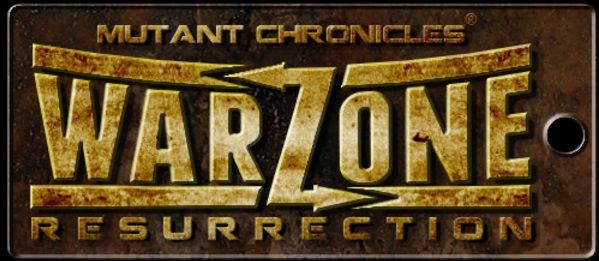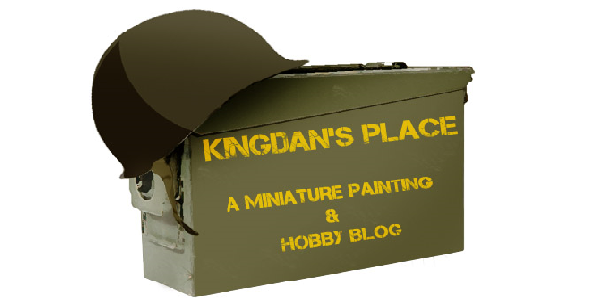Okay, so here's my first tutorial on how to do something.
I've had some SS minis around that needed painting and/or basing for a few years now, so I thought
it would be a good opportunity to complete them for my Estonian SS, and take some pics for a
tutorial along the way. I'm a firm believer of less basing to promote good figures on my basing, so
they tend to be plain and not cluttered in that respect.
I've just taken pics at the end of each step, hopefully my narrative gives a good idea of how I did
each step.
Supplies and Equipment:
Superglue glue (I use Loctite 401 from Blackwoods NZ)
PVA/Wood glue
Basing Grit
Spackle/putty (I use Selly's Rapid Filler)
Earth shaded paints (I use Vallejo)
Static grass, flock and tufts as desired (I use GF9 and silfor)
Spatula, or popsicle (paddle pop, ice block etc) sticks
Brushes- 3/0 and 1, a big soft fluffy, or as desired
Patience
STEP 1: Fixing the minis to the bases.
I prefer to paint my minis before attaching them to the base. I will generally paint the mini base Flat
earth, German camo medium brown or similar brown so that if my base is crowded I won't have to
worry too much about access around the minis feet.
Score the base or sand it a bit to promote adhesion of the minis and basing materials. Use superglue
to attach them to the base as required. A dry run for positioning is a must, to make sure you're
happy with their positioning. Then glue on. If you are doing a large run of minis and won't get to
complete to the putty stage I recommend using a thinned down application of paint or PVA around
the bottom of base of the minis to prevent the superglue from "frosting" up the base and/or minis.
STEP 2: Grit
ALWAYS varnish prior to applying grit. This prevents basing materials etc getting permanently stuck
to your minis giving them a fuzzy look. And it will ruin any flock for the same reason.
I have used a number of different grits, it doesn't matter what size, the main point here is to provide
a surface for the basing putty to be applied over. Spread superglue over the base in sections with a
spatula, (or cut down popsicle sticks, matches or whatever) , avoiding glue getting on the upper
surface of the mini base. Then pour or add pinches of grit onto it until well covered. Blow off excess
when dry- which should be instantly. If you do too much area at once the glue will spread too far and
may spill onto the minis. And superglue gives off some nasty fumes- too much will sting your eyes.
Why do I use superglue? One: PVA and the like doesn't stick well, and crumbles easy. Two: it dries
almost instantaneously, meaning I can carry on as soon as I want. If you get glue on your minis don't
wipe it off. Let it dry, you'll just ruin the paintwork if you try to wipe it off.
If you want to add signs, etc, then do that before adding the grit. When you add the grit it will
ensure a strong bond to the base, and prevent accidental damage when handling. Most protruding
things won't survive heavy handling if applied to the top of the putty. Add rocks (kitty litter) at this
stage too, so you can work around them later with putty. Again, this ensures a solid bonding to the
base.
I added some of my graves at this stage, though later I found I forgot some and added them with
superglue to the painted putty. This isn't ideal, and there's a good chance they'll get knocked off in
the future. Oh well.
When you are done, use a soft fluffy brush to remove the fine dust that would have accumulated on
your minis as you applied the grit. You may see a bit on my close up of the HMG team, and this is
why I prefer to varnish prior to basing, or after initial gluing to plastic base.
STEP 3: Putty.
You can do this with spatulas, or brush, or both. I prefer both. Old craft knives make great spatulas,
as they are flat and angled for hard to reach places. You need to force the putty onto the grit, the
rough surface will mean it will stick well- far better than using no grit at all. And it will dry quicker
too. When you have the exposed areas complete, you can use the spatula to tidy up, or a watered
down mix of putty. I applied the putty on my minis with old brushes using watered down putty.
There's no "right" ratio, just whatever works for the application and you can work it with the brush-
although if you use a bit too much water and are vigorous you'll put bubbles in it which look a bit
weird when dry. A common thing I'm seeing in many others work is obvious gaps between the mini
and the rest of the basing. Due to putty shrinkage, or inadequate filling the minis look like they are
stuck in a hole. Many obvious similar looking holes. They need to be blended in. So, go over the top
of the mini base irregularly with the putty to ensure the gap and profile is blended as best as
possible.
Use your brush to create textures as required.You can add some paint to the putty for the base colour instead of painting over it later. It will dry lighter than the original shade, but it is a good option.
When the base is dry review your work and clean up the areas around the mini bases, to ensure a
good profile. use more putty, or remove carefully with a knife as required.
STEP 4: Painting the bases.
You could add a thinned darker wash here to add some more shadows, which I chose not to do here.
It's more effective on rockier type terrain.
Get your favourite dry brushing brush and slowly add layers of lighter colours to create contrasting
effects and bring out the details. I started by adding a layer of US Tan earth over the top of my camo
medium brown base coat. You want to get most of the base covered here, as it will help with
subsequent layers. Too little coverage and you have less scope for, and weird contrast later.
After the USA tan Earth, I added Iraqi sand to the mix- about 50/50- and dry brushed this unevenly
around. If you leave areas around then you can create more varying highlights and colouring leading
to a more realistic look. add more Iraqi sand to the mix and add in layers reducing the amounts of
area you cover at each layer. Finally you can add some other lighter colours like buff, light sand,
stone grey for more contrast and variation.
At this stage I add any prone figures that do not have bases with a small amount of superglue.
It's also at this stage I add the identification band around the chamfered edge of the base. It's the
easiest way I've found to identify and differential platoons. Just don't use bright colours, and try to
keep to the same shades. Browns and greens work best. Bright colours like white, red or yellow can
be used for the CO, 2ic and warriors, but are too garish for whole units. In the past I have used
shades of green or grey for combat platoons, browns and earthy yellows for support platoons and
black for pioneers.
STEP 5: Flocking
I spent a bit of effort into the base colouring because I don't want an even coat of grass. I want to
see the earth in places where paths have been beaten, or gun crews have been working around for a
few hours. And at times grass can be naturally patchy anyway.
I make my own mixes from various other mixes. In this case I've made a mix using meadow blend
and spring undergrowth flock. to that mix I added dead/winter grass, green grass, and a touch of arid
grass. This means I have a pretty patchy looking mix, with variety to spice it up. The flocks have small red and orange bits to act as the odd flower, green bits to act as small weeds and what have you. the grass naturally sits on top, so it all should end up looking quite real. I *think* the tufts I used were summer and spring. Put all the flocking stuff in a container, and apply to the bases so that excess goes back into the container for reuse.
I brush on PVA with a brush- it can be watered down a little. I avoided some areas to create patchy
looks, and added heavier amounts of glue on places where I wanted the grass to be a bit more
dense. Sprinkle over the mix as you see fit. For the denser bits I take a pinch of the mix and press it
on with my fingers . After that is complete i add the tufts with more PVA to the top. Blow off any
excess back into your container. I've found that until the PVA sets you always seem to have more
grass on the base than you actually do.When dry, gently use a soft fluffy brush to remove excess grass form your minis, and you are done.
To make the grave flowers I used small grass tufts and glued on red and orange flock foam with PVA. Make sure you use small bits of foam, and add with tweezers. too big and they don't look real.
So that's it. If you are using the new Battlefront bases with pre-made mini holes, just go right ahead
to the putty part and fill in the gaps. Don't be afraid to make a test piece on scrap, and play around
with techniques to find what works. Hopefully I'll have a few more articles to add to Dans blog in the
future.
Happy basing,
Nodnol
Steve is an avid wargamer and father of 6. When he's not trolling forums and upsetting nerds he paints toy soldiers and occasionally wins awards some of his work can be found at
www.flamesofwar.com .








.JPG)
%2B(1).JPG)
.JPG)
.JPG)

.JPG)
.JPG)



















